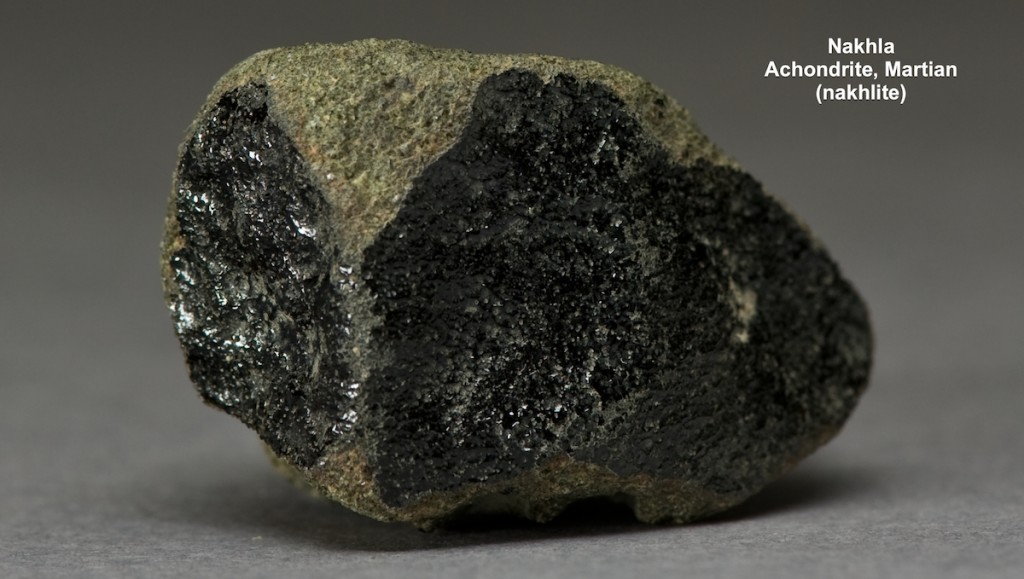Nakhla
Nakhla is a martian achondrite that fell June 28th, 1911, in Al Buhayrah, Egypt.
At the time of the fall, a newspaper article was published claiming the meteorite had hit a dog on entry. This was never proven, but did inspire a Peanuts cartoon strip, in which Linus and Charlie Brown discuss the meteorite striking a dog, to Snoopy’s dismay.
Members of the Buseck Center for Meteorite Studies are interested in deciphering the geologic history and evolution of Mars through trace element and isotopic studies of the martian meteorites, and Nakhla has been actively studied by Center researchers, including:
- Determining redox conditions in the mantle and crust on Mars through studies of rare earth element abundances, as well as the early differentiation history of Mars through investigations of the 146Sm-142Nd and 182Hf-182W short-lived isotope systems in the martian meteorites.
- Constraining the composition of aqueous crystal fluids on Mars through analysis of the boron isotope composition of the Nakhla meteorite.
- Utilizing the hydrogen isotope composition of the martian meteorites, determined using secondary ion mass spectrometry, to provide unique insights into the history of water on Mars and alteration of the martian crust.
Nakhla is the namesake for the nakhlite meteorite type group, made up of 14 distinct meteorites, and defined by the Meteoritical Society as clinopyroxenites or wehrlites formed as cumulate rocks.
Photo by L. Garvie, © ASU/BCMS.
